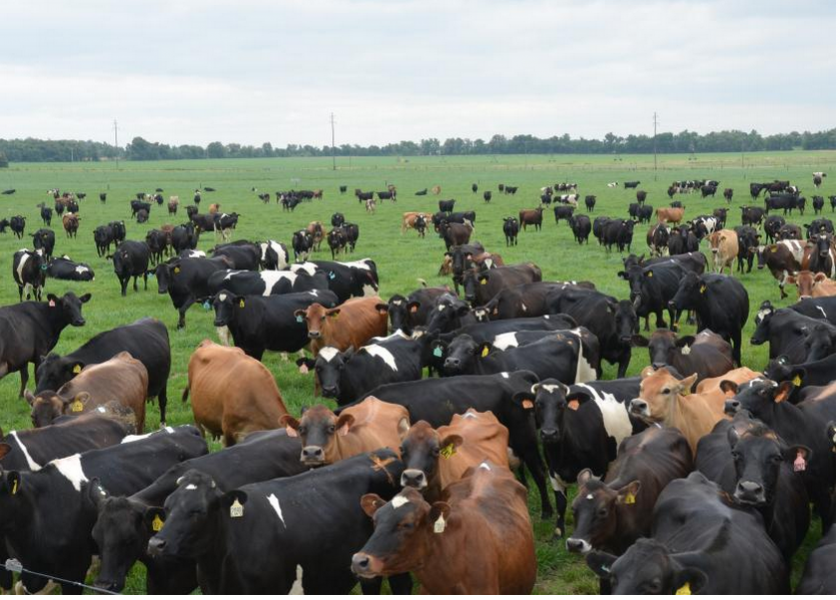Veterinarians Address Rising Mortality Levels In Dairy Herds

This article published originally in the March/April issue of Bovine Veterinarian.
It is a fact of life cows die. Knowing why they die, however, can lead to improved management and fewer losses, say Franklyn Garry and Craig McConnel, veterinarians with Colorado and Washington State Universities, respectively.
In the past 50 years, death losses on dairies have crept up. In the 1970s, for example, death losses typically ranged from 1% to 5%. Since the early 2000s, however, death losses have topped up to 15%, averaging 6% to 8% on many dairies.
“Rising rates of [mortality] occurrence across the industry suggest that veterinarians and producers do not have the information required to manage the problem,” McConnel says.
“For a herd where 5% to 10% of standing inventory is lost to death each year, accepting death losses as inevitable no longer makes sense,” Garry adds. “If a cow dies or is euthanized due to a problem that could have been better managed, there are risks for other cows in the herd to have a similar outcome.”
The first step in evaluating the impact of death loss in a dairy is to work with the dairy farmer to get a better idea of how many cows are dying each year. Then determine if that rate is high or low compared to industry standards, and estimate the financial impact the death rate is having on the operation.
Not only do farmers lose the value and production capability of the cow that dies, additional heifers must be raised to make up for those losses. Each farm will be different, but each preventable death will cost a dairy thousands of dollars when those costs are tallied.
Cause of death
Garry and McConnel estimate there are 30 or more reasons why cows might die. But looking at most dairy record systems, farmers typically list eight to 10. And after closer examination, these records are only about 50% accurate. That’s not surprising, they say, because cause of death is often complicated and difficult to assess without performing a postmortem exam.
According to recent National Animal Health Monitoring System studies, only 15% to 24% of dairy operations even had necropsies performed on dead cows and less than 5% of dead cows are necropsied at all. “The fact very few dairy cows are evaluated by necropsy leaves a serious information gap in any analysis of cow mortality,” McConnel says.
Not every dead cow needs to be necropsied, he adds. “Accidents that lead to euthanasia and cows with prolonged illness and substantial diagnostic workup probably do not warrant a necropsy unless there are specific lingering questions,” he says. “However, cows that die without much warning, or cases where the outcome was expected to be very different, certainly warrant a necropsy.”
McConnel says dairy farmers can get a good idea of the reasons why cows die on their farms by necropsying about 50% of their cow deaths.
The use of cellphone photos and tissue samples for further evaluation is relatively easy, he adds. Once this information is sent off and analyzed by the herd’s veterinarian, a cause of death can usually be determined.
Cow death certificates
Once the cause of death is determined, it must be recorded in a systematic way so it can be analyzed, summarized and reviewed over time. That allows the farmer and veterinarian to determine if there are patterns to the causes of death and what changes might be implemented to prevent future problems. Because of this, McConnel and Garry have created a cow certificate of death that records all pertinent information.
“The idea behind the death certificate is not that there is 100% certainty about the cause of death,” Garry says. “Rather, it prompts the dairy worker and/or the herd veterinarian to become more aware of the specific risks and likely problems that end up with a bad outcome.”
“Knowing what a cow did and thinking through the chain of events that led to that loss is a powerful means to critique the risks that occur daily on the operation,” he adds.
Along with the cow death certificate, Garry and McConnel have developed an alphanumeric coding system that can be used in conjunction with computerized dairy record systems. That allows the farmer and veterinarian to identify areas of preventive interventions, the proximate cause of death and any other underlying causative problems.
“The code makes it easy to determine how many cows died for specific reasons while providing much more information than current records,” McConnel explains. “Again, this heightens awareness of specific risks on the dairy that can produce bad outcomes.”
If cows are dying because of a specific problem area on the dairy, such as nutrition, disease or injury, the system makes it easier to identify those areas so corrective action can be taken as soon as possible.
Garry and McConnel recommend herd owners and veterinarians routinely review these death records to monitor herd performance and identify potential problems so improvements can be made.
“For the dairies we have studied, it seems that only a small percentage of deaths were truly unavoidable,” they say. “The remainder can be evaluated and good information can be obtained that can help a producer take steps that decrease such losses in the future. But this requires investigation of losses in a manner that provides information about prevention strategies.”
Q&A: Bovine Veterinarians Weigh-In On Dairy Health Issues
New Zealand Dairy Health Scare Has Lessons for U.S.







